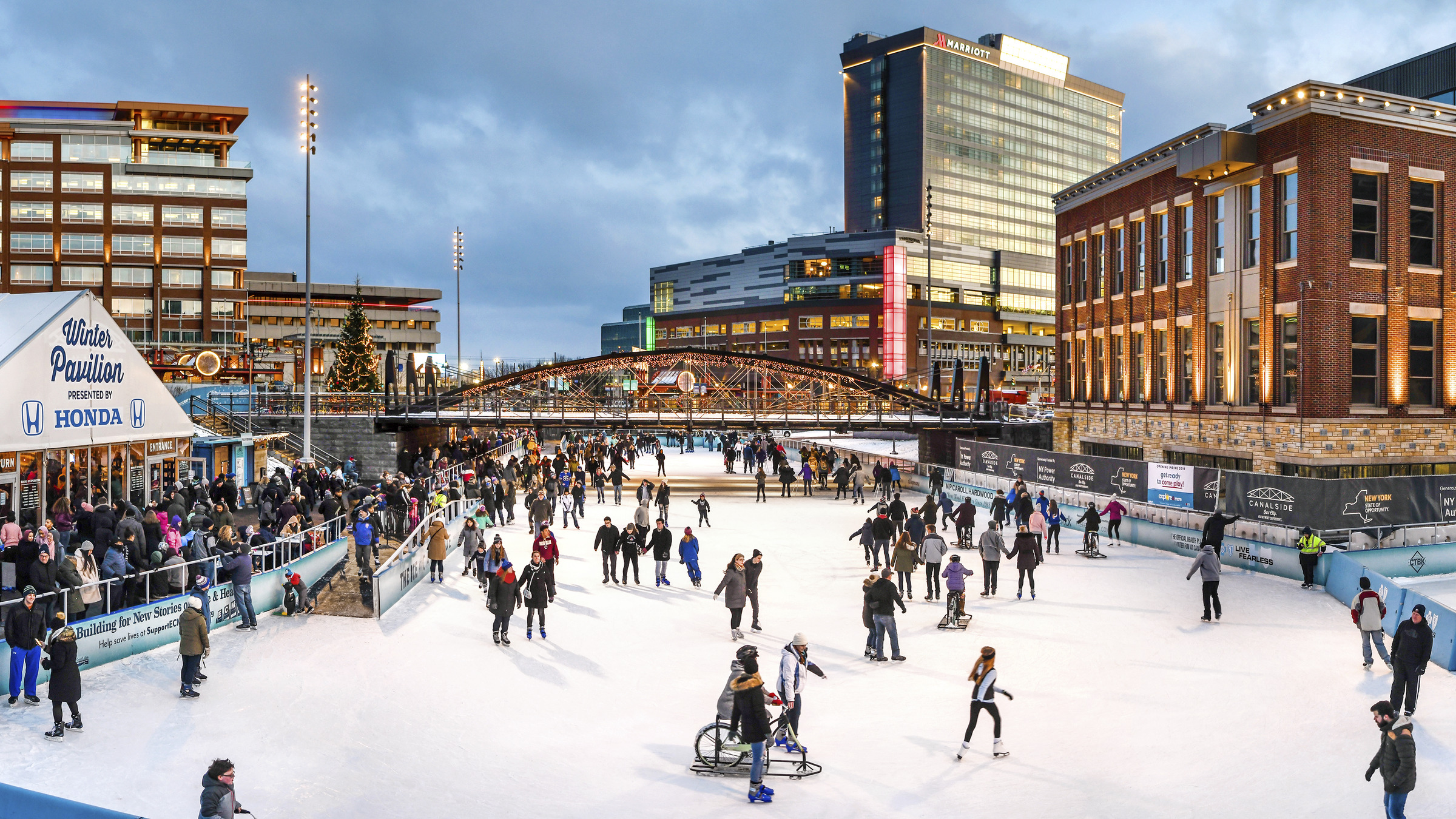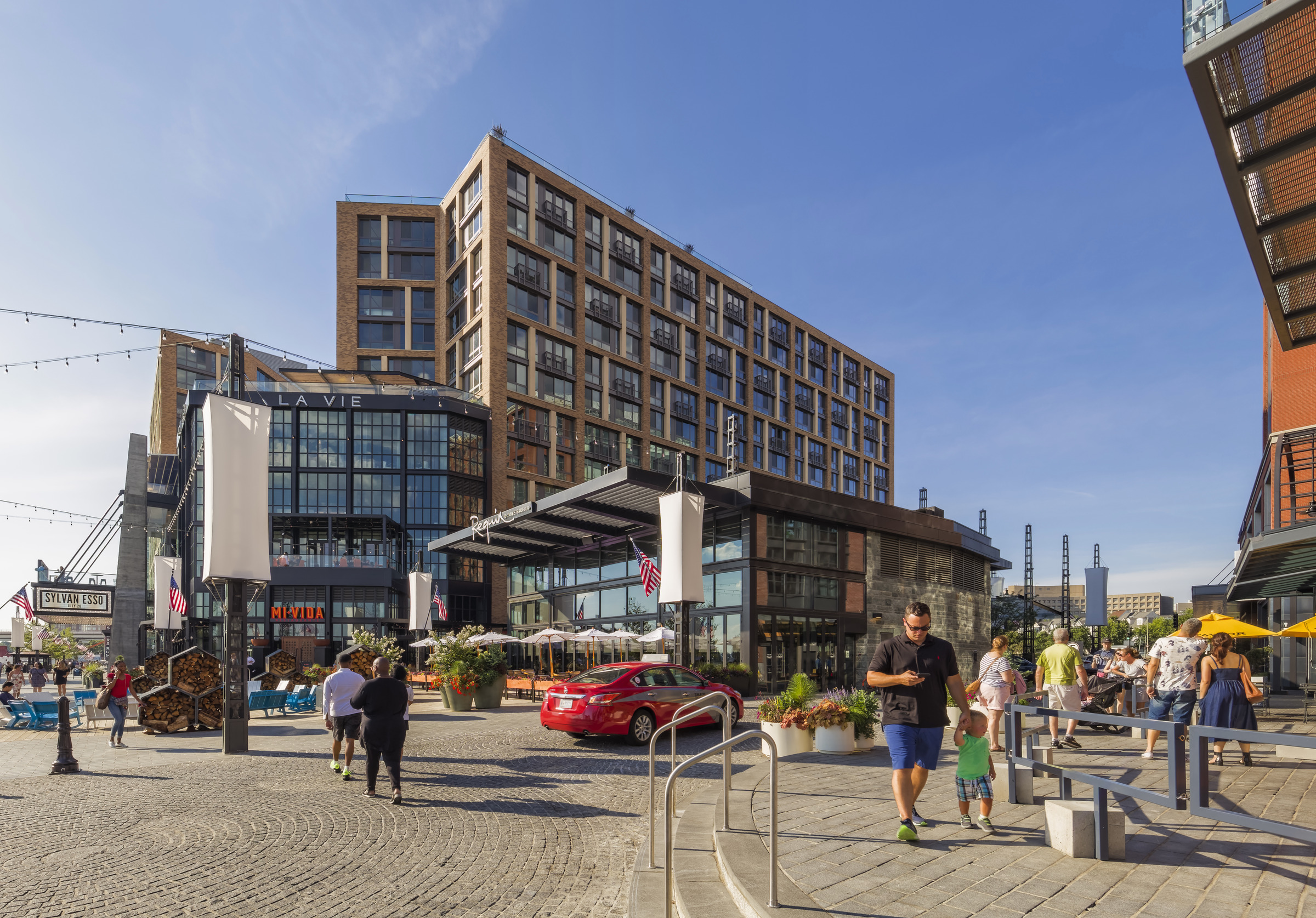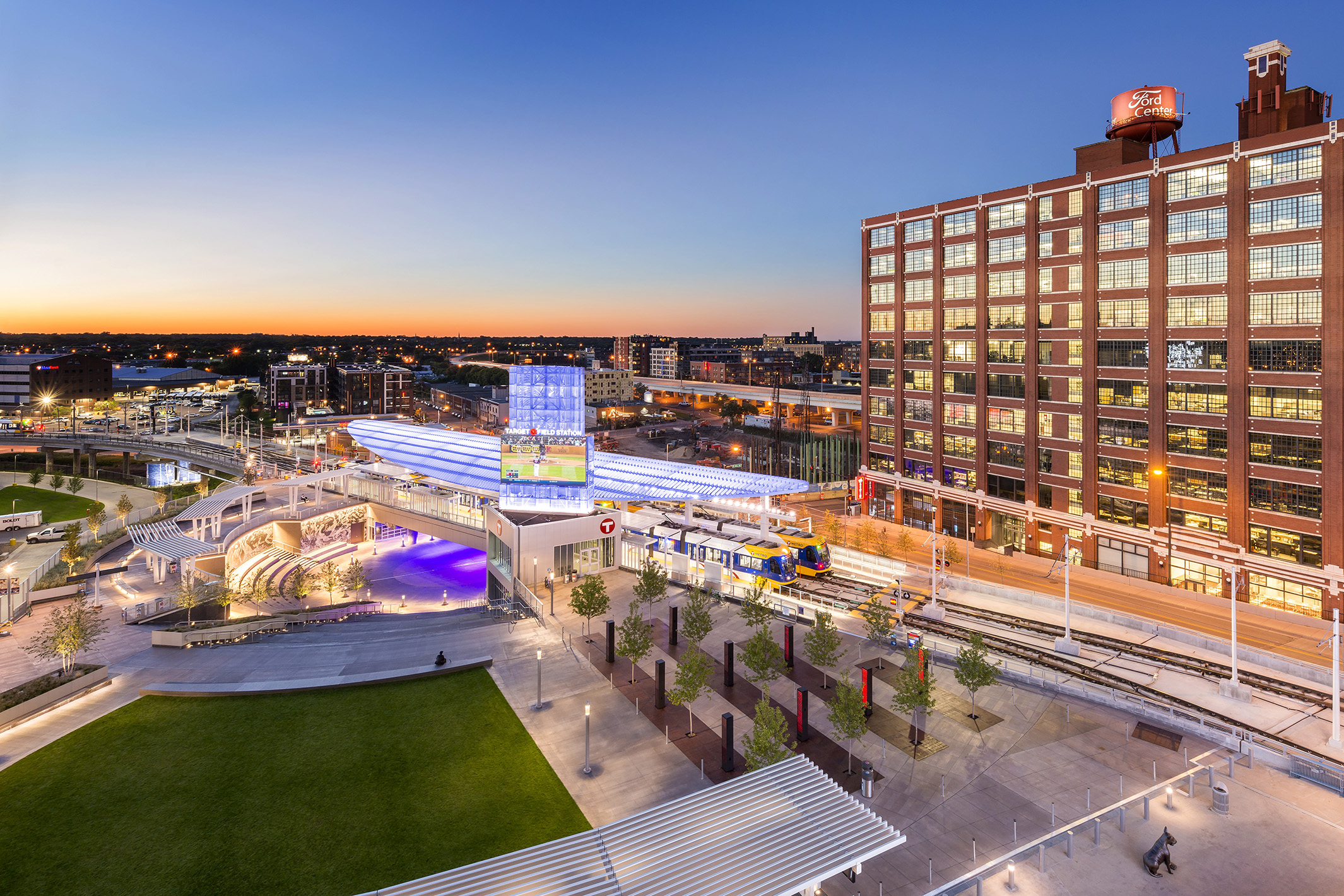
A July Fourth fireworks display over Canalside in Buffalo, New York.
Courtesy Erie Canal Harbor Development Corporation
From the National Mall to the local town hall, millions of us are preparing to watch the fireworks go up over our waterfronts, plazas, and parks—the kinds of places in our communities where we feel drawn even when large events aren’t taking place. “It’s easy to celebrate on the day of a big event, but the real success of a place is that it’s comfortable on any given day,” says Perkins Eastman Principal and Executive Director Hilary Bertsch, who’s had a guiding hand in some of the firm’s most prominent place-making developments.
Reflections of the Past
With Perkins Eastman serving as Master Architect of Canalside, Bertsch and Principal Stan Eckstut directed the planning and design of a twenty-acre project that recreates the western terminus of the Erie Canal—filled in and paved over in the last century—with reflecting pools that trace the canal’s original path. The project extends the Buffalo River inland, with open space and mixed-use development coming up along the edges. The initial phase was completed in 2014, and new development there continues to this day.
“Canalside has become a destination location and catalyst for the renewal of Buffalo’s historic waterfront,” New York Governor Kathy Hochul said in a statement last month as she opened the bidding for the last open parcel on the site, a two-acre lot where an arena once stood. This final mixed-use development, Hochul said, “will help boost the economy, open new public spaces, and make the Buffalo waterfront an even more popular place to live, work and play.”

New channels off the Buffalo River trace the original path of the Erie Canal, providing opportunities for open space and development to come up along with them. Courtesy Perkins Eastman
The water, of course, draws people there. When it freezes, it forms the largest outdoor skating rink in New York. During the summer, it fills with paddleboats while people stroll its tow paths, which replicate the ones that mules plodded to pull barges along the original canal. The new buildings fill the original footprints of structures that populated the Buffalo Harbor in the late nineteenth century. These developments, with their ground-level restaurants and shops, frame lively open spaces around the canals that include a great lawn for concerts and large gatherings plus smaller sites such as cobblestone pathways and a fire pit with Adirondack chairs. In this respect, Canalside is the model for a thriving urban locale, Bertsch says. These spaces “have to recognize the scale and be specific to the place they’re going into—and if you make a place successful for the locals, it’s successful for everyone.”

The shallow canals were designed three feet below street level to mitigate Buffalo’s famously cold winter winds.
When it’s not as cold, mechanical systems underneath ensure the water stays frozen for ice skating.
Copyright Joe Cascio/ Courtesy Perkins Eastman

The channels fill with paddle boats and remote-operated sailboats during the summer, while the wide tow paths welcome people to walk, wade, or dine. Copyright Joe Cascio/ Courtesy Perkins Eastman













